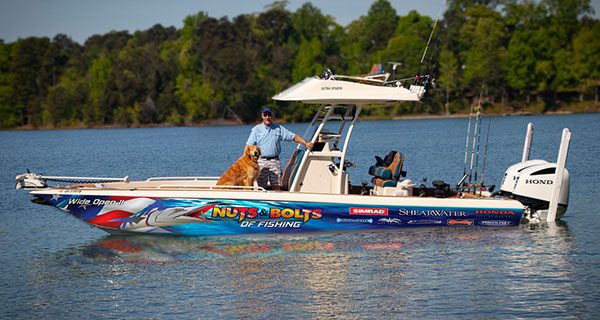
I fish year ‘round. Just because it’s cold outside, doesn’t mean the fish quit eating. I’m not a big fan of fishing hard water, but folks in the Midwest actually look forward to sitting on an iced-over lake in single-digit temperatures. And they catch some big fish too.
If you choose to let your boat hibernate during the winter months, in the garage or at a boat storage facility, you have the perfect opportunity to perform a few maintenance chores that will have your boat ready to go next spring. Spending a few hours now, will help insure you are ready to hit the water again when the weather warms up. Here’s a few tips to get you started.
First, if you didn’t clean your boat when you hauled it out for storage, now is a good time to do that. A wash-down and coat of wax will make it easier to clean next summer. If the gelcoat is starting to fade, roll up your sleeves and polish the entire exterior of the hull with a light or medium polishing compound, then a good coat of marine wax. Take your time and really deep clean all the storage compartments, live wells, the bilge, console, upholstery, etc. While you’re doing this, you’ll be able to see gel coat cracks, loose screws on hatches, and damaged or corroded electrical connections.
I think it’s fair to say a lot of boating problems are due to electrical gremlins. First, examine your batteries for that ‘blue goo’ that develops on the terminal posts. That’s corrosion. Clean the posts and check the battery cable lugs and the wire inside the lug for corrosion too. That ‘blue goo’ can migrate down the filaments of the battery wire (and other wires) and cause a voltage drop. If you see that, then you may need to cut the cable back to the point where you see pristine wire again and re-attach a new terminal lug end. Many boats have a buss bar where all the ground wires connect, and some even have buss bars for the positive wires too. Check these for corrosion, and make sure the screws that hold the wires are snug. Apply a thin coat of an anti-corrosion spray like Boeshied T-9 spray to all your electrical connections. Consider putting a trickle charger on your batteries to keep them topped off during the winter.
While you are cleaning your bilge area, check your bilge pump. If your pump has an external bilge pump float switch, it’s an easy check. Just lift the switch up, and the pump should come on. If the float switch is ‘internal’, then the best way to make sure everything is correctly functioning is to put the drain plug back in the transom and pour a 5-gallon bucket of water in the bilge to see how the entire system works. You can check your hose connections at the same time.
Check all your safety gear. Take out lifejackets and the throwable cushions and check them for tears and mildew. If they are damp, let them completely dry out and check them again. If they are torn or tattered, replace them now. Check your fire extinguisher. The indicator needle should be in the green. If it’s not, replace it now. Also check the nozzle on the extinguisher too. Wasps love to build a nest right in that small hole, and that could prevent the extinguishing agent from coming out when you really need it. And by the way, did you know fire extinguishers now have expiration dates? Check that too.
Next, spend some time with your trailer. Are the tires properly inflated? Is your winch strap in good shape? When was the last time you added grease to the wheel hubs? Is your brake fluid reservoir properly filled?
And finally, don’t abandon your boat all winter long. Stop by and say hello every now and then. I’d strongly suggest taking it for a short tow around the block. This will keep your wheel bearings and brakes in good shape, and it will prevent your tires from developing a ‘flat spot’.
This isn’t a complete list of every boat maintenance item, but it’s a good start. And these few tasks will go a long way toward a quick and easy return back to the water when the dogwoods start to bloom.